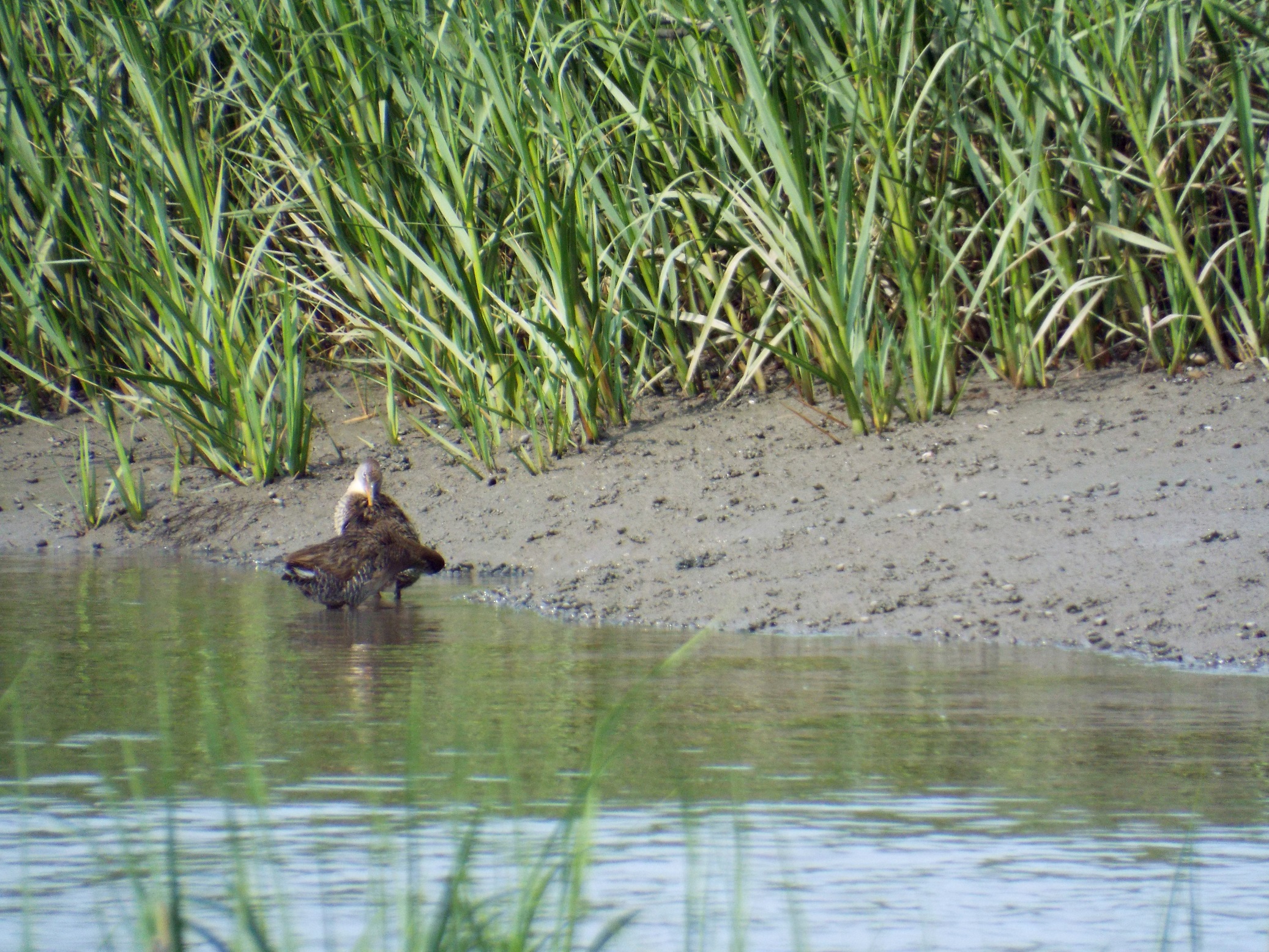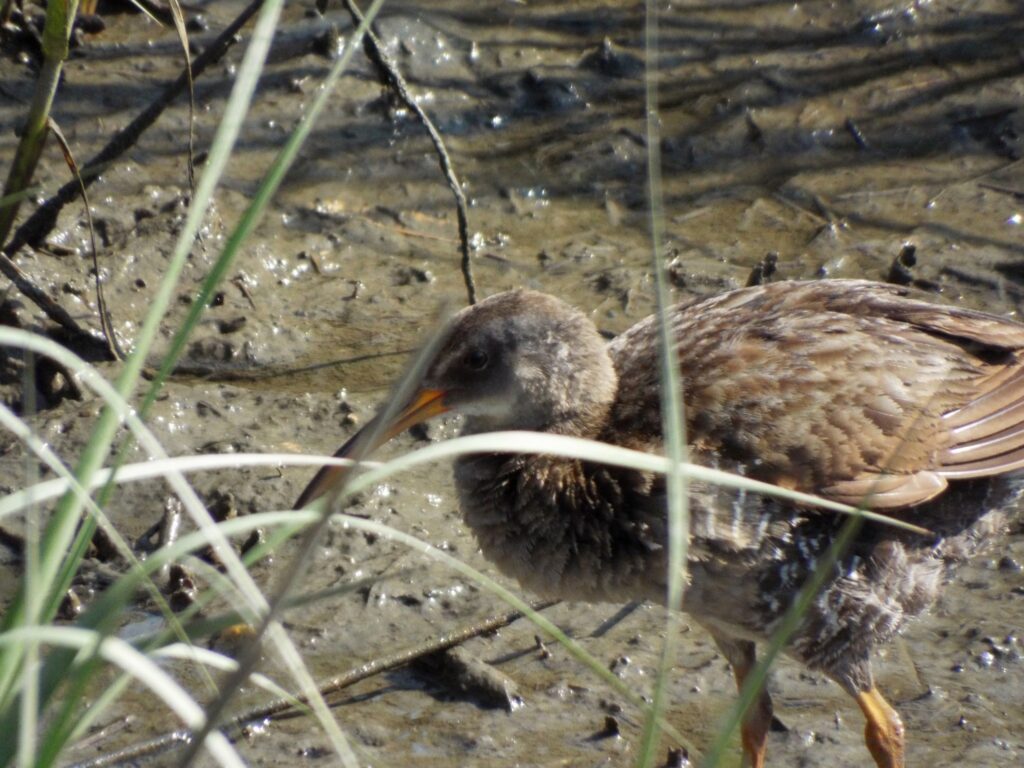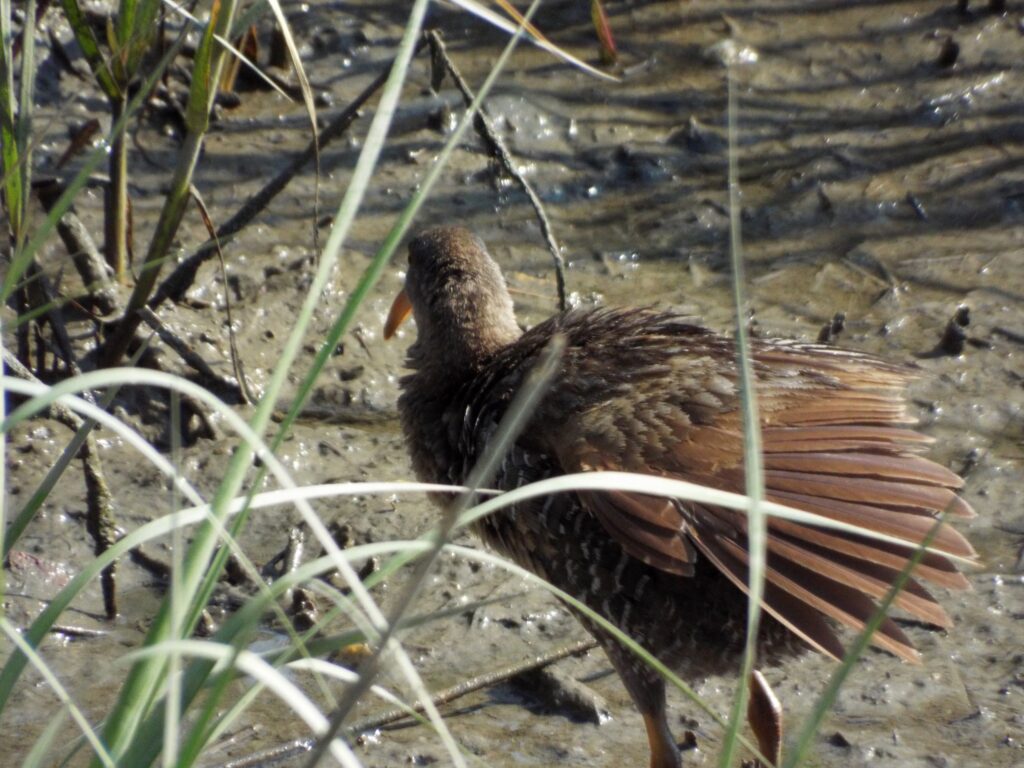




This week for flora and fauna Friday we’re examining an often heard but scarcely seen marsh bird. This week we’re talking about the Clapper Rail (Rallus crepitans).
Clapper Rails are a common bird species in the saltmarshes of Edisto and throughout the East and Gulf coasts. They are one of our largest Rail species. Rails are not shorebirds, as one might guess, but are more closely related to Coots, Cranes, and Gallinules. Their noisy “clapping” song, a series of loud industrial sounding grunts, is heard throughout the year wherever there is marsh. Clapper Rails spend their lives beneath the rushes and grasses of the marsh. Only occasionally venturing out to cross a causeway or stream or clean their feathers. Clapper Rails are omnivorous but prefer eating arthropods, especially Fiddler Crabs.
For every bit as boisterous and cacophonous a Clapper Rail is in voice, it is equally as stealthy and secretive in appearance. Rails are unparalleled masters of stealth in their domain of the marsh. Their plumage is perfectly patterned to dissolve the bird within the marsh. Their body is shaped so that they can live their entire life undetected beneath the grass and rush. The phrase “thin as a Rail” is a nod to one of their many adaptations to marsh stealth. Rails can flatten their bodies laterally. This allows them to squeeze through tight gaps in the grass and not only walk, but run, in between the reeds without even touching them! Staying off the grass is important. Brushing against the reeds makes noise and causes the grass to sway above the marsh. Both of these signatures can be tracked by predators and could give away a Rail’s location. Clapper Rails are built for speed. Not in the air but on soft mud. They have long legs, wide toes, and a shortened tail and wings. They are experts in the Spartina Slalom and will wipe the floor with even the serpentine Mink in a foot race through the marsh. Clapper Rails have traded most of their flight capabilities for agility on land. Because of this, their build is very reminiscent of a scrawny Chicken, which coined them the nickname “Marsh Hens”. It also means they are poor fliers and are most vulnerable in the open. Their main predators are Mink, Great Blue Herons, and Hawks. I’ve found the best place to see Clapper Rails out and about is around marinas, boat landings, and fishing piers. Places where humans are always present and the birds are used to us.